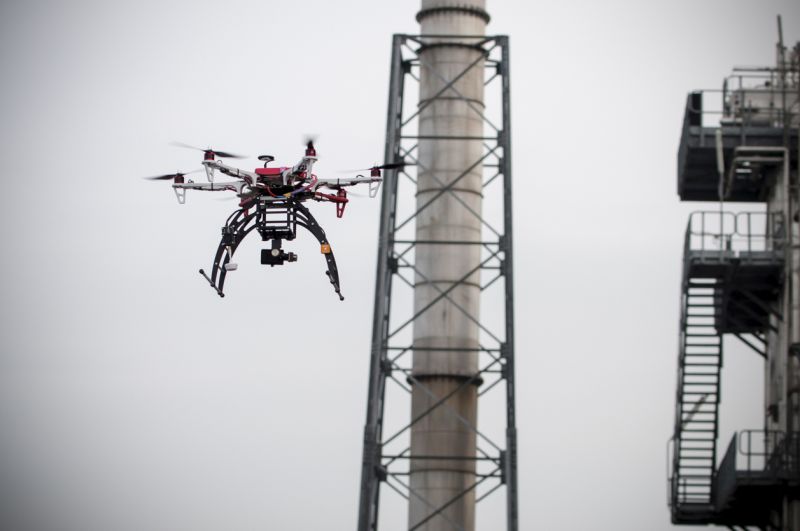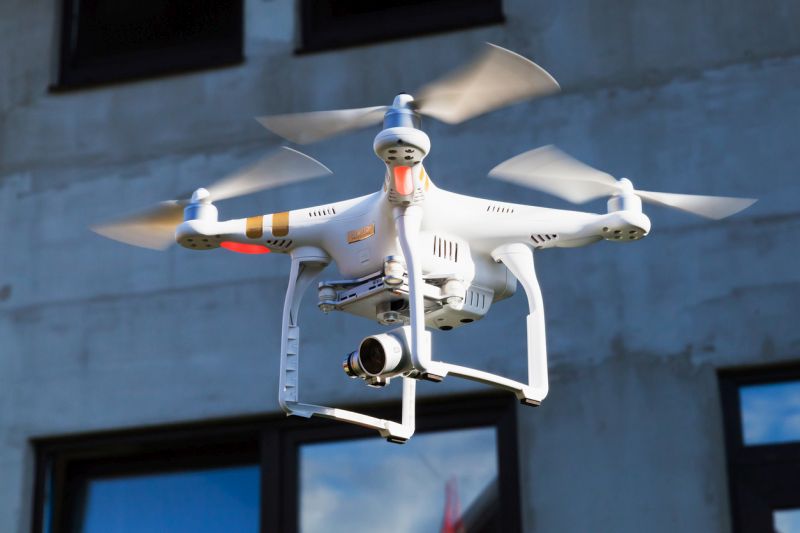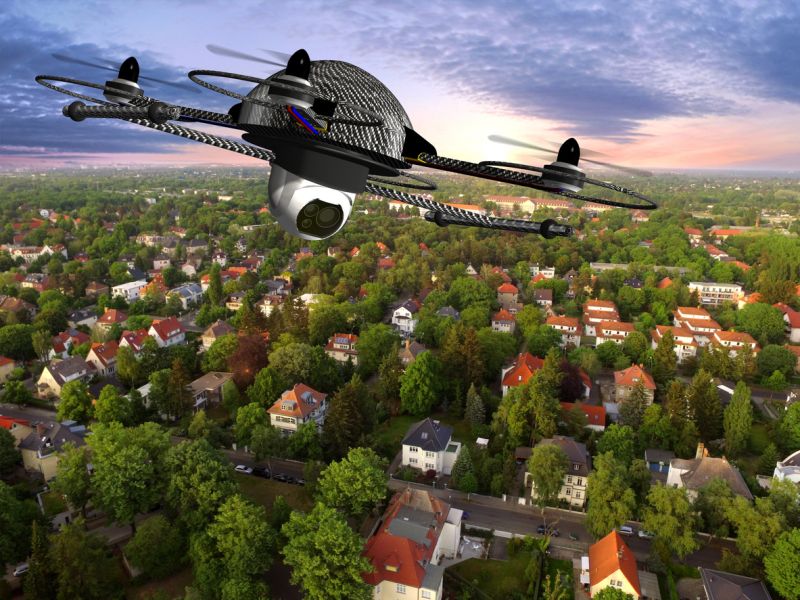If the Night's Watch had been able to purchase a cheap camera-equipped drone, Jon Snow might have noticed the Night's King and his army of White Walkers before they surprised and overran the Wildings' camp in Season 5 of HBO's “Game of Thrones.”
Originally a tool developed exclusively for military operations, drones now hover at the horizon of widespread commercial application. Drones delivering online purchases and monitoring traffic are yesterday's news; small and large businesses are now exploring the feasibility of using drones for such varied tasks as providing emergent medical services, waiting tables, providing wireless internet access, and inspecting industrial sites. This explosion of drone use brings with it a plethora of new liability exposures and insurance coverage issues.
Related: Drone insurance: Are your clients covered?
Anticipate liability claims
While tort litigation arising out of drone accidents has not yet inundated the court system, we can anticipate several types of liability claims because of the diverse ways in which society has begun to use these machines. The obvious source of liability for using a drone is its potential to cause bodily injury or property damage.
Some drones can weigh up to 50 pounds and travel at speeds approaching 80 miles per hour. A number of media reports consequently describe severe lacerations, eye loss, and soft tissue injuries resulting from drone accidents.
In addition to crashing into people and property, ubiquitous drone use also creates the potential for numerous other types of accidents, such as automobile accidents due to distraction from low-flying drones, injuries resulting from dropped cargo, liability for damaged cargo, or catastrophic accidents resulting from a drone's interference with aircraft.
Liability for drone use, however, is not limited to bodily injury or property damage claims — drone operators also face significant exposure to claims of invasion of privacy.
The commercial applications for drones frequently rely upon the use of a video camera mounted directly to the drone itself, which can generate real-time images and video of the surrounding environment. Users can also modify their drones to add night vision and/or infrared lenses.
Flying a drone with a recording video camera in a heavily populated residential area — such as among the various condominium high rises in Philadelphia — consequently creates a substantial risk that the drone operator will wrongfully intrude upon the privacy of others.
Related: U.S. says 7 million drones will take to skies annually by 2020
Individual drone users who frequently publish drone videos on the internet and via social media are particularly susceptible to such liability. Similarly, drone operators whose cameras peer into offices, warehouses, and industrial sites risk potential exposure to liability for theft of proprietary information and other intellectual property rights.

Liability for using a drone doesn't fit neatly into the coverage provided by the types of liability insurance policies that most individuals and businesses currently possess. (Photo: iStock)
Cyberliability & hacking
Cyberliability and hacking are also concerns. Drones can serve as both collectors of information and mobile delivery systems. Consequently, drones used to collect sensitive information might become targets for malicious software users seeking to steal data. A hacker might even usurp control of the drone itself for the purpose of performing further wrongful or illegal activities, such as theft of its cargo or stored information, trespass, invasion of privacy, or the transport of contraband.
All of this potential for a drone operator's liability naturally raises the question of whether, and to what extent, standard liability insurance provides coverage for potential claims against the user. Liability for using a drone, however, does not fit neatly into the coverage provided by the types of liability insurance policies that most individuals and businesses currently possess.
CGL policy liability coverage
In the commercial context, the standard commercial general liability (CGL) insurance policy that most businesses obtain provides two separate forms of liability coverage: Coverage A, which insures against liability for bodily injury and property damage, and Coverage B, which insures against liability for other types of tort claims, such as the invasion of another's privacy. Consequently, a lawsuit alleging that a drone operator crashed a drone into a pedestrian or shattered a window potentially implicates Coverage A, whereas a claim against a drone operator that he used the drone's camera to invade another's privacy might implicate Coverage B.
This distinction is significant because Coverage A often contains an “aircraft” exclusion, whereas Coverage B does not. This exclusion usually states that coverage does not apply to bodily injury or property damage “arising out of the ownership, maintenance, use or entrustment to others of any aircraft, auto or watercraft owned or operated by … ” any insured. The critical issue that courts have not yet wrestled with is whether a drone constitutes an aircraft within the meaning of this exclusion. While “ auto” is expressly defined in the standard CGL coverage form, aircraft is not.
Related: 14 things you need to know about commercial drones and insurance
When confronted with an undefined policy term, most courts would enforce the plain meaning of the term and consult a standard dictionary to guide its interpretation, as in General Refractories v. First State Insurance , 94 F. Supp. 3d 649, 658 (E.D. Pa. 2015) (permitting resort to dictionary to determine plain meaning of terms in policy exclusion). Merriam-Webster defines aircraft as “a vehicle (as an airplane or balloon) for traveling through the air.”

Many courts will construe an ambiguity in an insurance policy, especially in an exclusion, against an insurer and in favor of a policyholder's reasonable expectations. (Photo: iStock)
Defining 'aircraft'
Federal air commerce and safety statutes — to the extent a court might look there for guidance — similarly define aircraft as “any contrivance invented, used, or designed to navigate, or fly in, the air.” (See 49 U.S.C. Section 40102(a)(6) (2016)). Both of these definitions are arguably broad enough to encompass a drone and support application of the aircraft exclusion.
Related: More drones-for-hire coming to U.S. skies under landmark rules
A policyholder might argue, however, that aircraft as used in the exclusion is ambiguous in the drone context, because it is reasonable to construe the term in this exclusion as referring solely to aircraft in the traditional sense, i.e., manned aircraft used to carry people or cargo. The policyholder might support this contention by pointing out that the exclusion also precludes coverage for the use of an auto or a watercraft, which are traditionally manned vehicles used to move people or cargo.
Many courts will construe an ambiguity in an insurance policy, especially in an exclusion, against an insurer and in favor of a policyholder's reasonable expectations, as in Progressive Casualty Insurance v. Hurley , 765 A.2d 195, 202 (N.J. 2001), (“courts will enforce only the restrictions and the terms in an insurance contract that are consistent with the objectively reasonable expectations of the average insured.”).
Invasion of privacy coverage far from certain
Likewise, although Coverage B of the standard CGL form usually does not contain an aircraft exclusion, coverage for invasion of privacy claims arising out of drone use in a particular case is far from certain. Coverage B usually contains exclusions barring coverage for the knowing violation of the rights of another, criminal acts, and the infringement of copyrights, patents, trade secrets or other intellectual property rights. Nor is cyber liability generally covered under a standard CGL policy. Consequently, claims alleging that an insured used a drone to steal data or information or to engage in criminal trespass are unlikely to be covered under a standard CGL policy.
Related: If you invade someone's privacy with a drone, your insurance might not cover it
Other types of liability insurance policies are also unlikely to provide complete coverage for all of a drone user's foreseeable exposures to liability. Companies that already hold aviation liability insurance policies might have coverage for drone-related bodily injury or property damage claims, but it's highly unlikely that such policies provide coverage for invasion of privacy, data theft, or “hacking” claims. Liability insurance policies containing endorsements that limit coverage to designated premises or specific construction projects will not likely provide coverage for drone-related accidents that occur away from those locations.

Coverage for a drone accident under a homeowner's policy is likely to turn on the type of drone used and the purpose for which it was used. (Photo: iStock)
Standard homeowners' policy
Similarly, whether an average individual's potential liability for the use of a drone falls within the ambit of a standard homeowners' insurance policy will likely depend on the applicable definition of aircraft. One standard homeowner's insurance coverage form, for example, defines aircraft as “any contrivance used or designed for flight, except model or hobby aircraft not used or designed to carry people or cargo.”
Many homeowners' policies also exclude coverage for business operations. Coverage for a drone accident under a homeowner's policy is therefore likely to turn on the type of drone used and the purpose for which it was used.
Related: Your kid just got a drone. Should you get insurance?
Insurers have begun to introduce new coverage forms to alleviate this uncertainty. In February 2015, the Insurance Services Office — which creates many standard insurance forms — released six new commercial general liability coverage forms addressing the use of unmanned aerial vehicles. Three provide limited coverage under a standard CGL form — under Coverage, A, Coverage B, or both — while the other three exclude coverage under one or both coverage forms.
A few insurers have recently introduced wholly new commercial liability insurance policies designed specifically for the commercial use of unmanned aerial vehicles. Nevertheless, the ubiquity of personal and commercial use of drones seems to be outpacing the prevalence of these new insurance products.
Surging source of new liability exposure
The personal and commercial use of drones joins the ranks of cyberliability, terrorism, ride-sharing, and driverless vehicles as a surging source of new liability exposure. As the skies swarm with unmanned aerial vehicles, the courts may soon clog with suits over drone-related accidents.
Although the insurance community has forecast this risk and has started to adapt, courts have not yet truly tested current liability insurance policies or the new coverage forms recently introduced in the context of drone use. Whether they have that opportunity will depend significantly on how quickly insurers offer new insurance products designed to provide coverage for drone liability, and the extent to which policyholders purchase adequate liability insurance coverage prior to engaging in the widespread use of drones.
Related: 10 steps to mitigating drone risks on construction sites
Sean P. Mahoney is an advisor to insurers and commercial clients who has extensive trial and litigation experience managing complex insurance coverage, life insurance, reinsurance, business tort, and commercial contract disputes in state and federal courts and in private arbitration proceedings. Contact him at 215-864-6342 or [email protected].
Geoffrey F. Sasso's practice includes defending matters on behalf of product manufacturers, universities, retail establishments, and construction companies. Contact him 215-864-6245 or [email protected].
Want to continue reading?
Become a Free PropertyCasualty360 Digital Reader
Your access to unlimited PropertyCasualty360 content isn’t changing.
Once you are an ALM digital member, you’ll receive:
- Breaking insurance news and analysis, on-site and via our newsletters and custom alerts
- Weekly Insurance Speak podcast featuring exclusive interviews with industry leaders
- Educational webcasts, white papers, and ebooks from industry thought leaders
- Critical converage of the employee benefits and financial advisory markets on our other ALM sites, BenefitsPRO and ThinkAdvisor
Already have an account? Sign In Now


